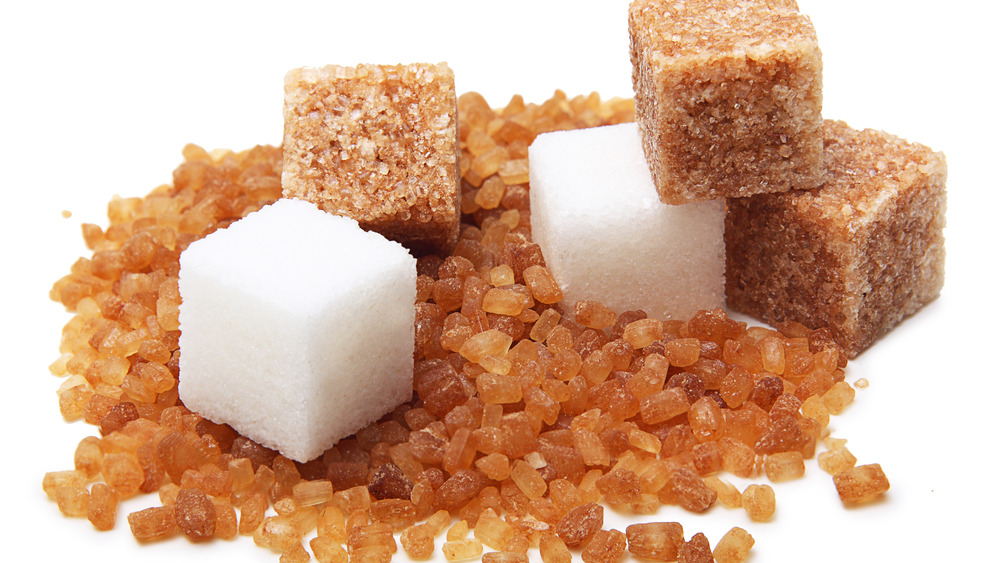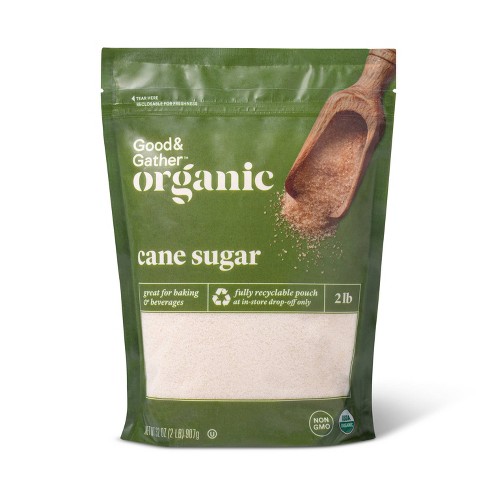Recognizing Cane Sugar Processing: A Comprehensive Overview of the Stages
Recognizing Cane Sugar Processing: A Comprehensive Overview of the Stages
Blog Article
Exploring the Comprehensive Tips Associated With Cane Sugar Handling From Harvesting to Improvement
The process of walking cane sugar production incorporates a series of intricate actions, beginning with the cautious harvesting of sugarcane and culminating in the improvement phases that make sure the end product satisfies industry criteria. Each phase, from the removal of juice to the purification and crystallization procedures, plays a critical function in identifying the high quality and personality of the sugar. Recognizing these phases not just highlights the intricacy of sugar manufacturing however additionally elevates important concerns regarding effectiveness, sustainability, and development in the sector. What ramifications do these variables have for future practices?
Harvesting Sugarcane
Gathering sugarcane is an essential action in the walking cane sugar handling chain, as it straight affects the quality and yield of the final product. Proper timing and techniques are important during this stage to make certain optimum sugar web content and lessen losses. Normally, sugarcane is gathered when it reaches maturity, typically 12 to 18 months after planting, characterized by a high sucrose concentration.

Post-harvest, the sugarcane has to be refined quickly to stop sucrose destruction. Preferably, gathered walking stick ought to be carried to processing facilities within 1 day to preserve sugar high quality. As a result, reliable logistical planning is critical to maintain the stability of the collected crop throughout the supply chain.
Extraction Refine

The crushed cane undergoes a collection of pushing procedures to take full advantage of juice recuperation. Typically, warm water is sprayed onto the smashed walking cane, developing a countercurrent circulation that helps dissolve the sugar while likewise aiding in the extraction process. The juice accumulated from this procedure consists of not only sugar yet likewise different organic substances and pollutants.

To improve removal performance, some centers might employ diffusion methods, where the sugarcane is taken in hot water, enabling the soluble sugars to diffuse into the liquid. The resulting juice, rich in sucrose, is then guided to subsequent processing stages, laying the foundation for purification and refinement. The extraction procedure is hence pivotal in identifying the high quality and yield of the last sugar item.
Purification Methods
The filtration strategies used in walking cane sugar handling are important for transforming the raw juice into a high-quality sugar product. These techniques largely intend to get rid of impurities, such as soil, plant materials, and not natural materials, which can negatively affect the end product's taste and shade.
This process includes including lime and heat to the raw juice, which helps with the coagulation of pollutants. Furthermore, the use of phosphoric acid can boost the information procedure by additional binding pollutants.
One more significant technique is carbonatation, where co2 is presented to the made clear juice. This reaction generates calcium carbonate, which catches remaining pollutants and promotes their removal.
Furthermore, triggered carbon treatment may be put on adsorb any type of continuing to be colorants and organic contaminations, making certain a much more refined item. The combination of these approaches effectively prepares the sugar juice for succeeding steps in the refining procedure, setting the stage for the manufacturing of high-grade walking stick sugar.
Formation Methods
After the filtration phase, the next essential action in walking cane sugar processing entails crystallization approaches, which play a critical duty in transforming the clarified juice right into solid sugar. This procedure normally employs two main approaches: spontaneous condensation and controlled condensation.
In spontaneous condensation, supersaturated sugar remedies are enabled to cool normally, leading to the development of sugar crystals over time. This technique allows for the uniform growth of sugar crystals and higher purity.
Throughout formation, the clarified juice is concentrated through evaporation, enhancing its sugar content until it reaches supersaturation. As soon as this factor is accomplished, either method can help with the crystallization process. Cane Sugar Processing. The resultant sugar crystals are after that divided from straight from the source the staying syrup through centrifugation
Ultimately, the selection of formation approach affects the top quality, size, and pureness of the last sugar product, making this action essential in the overall walking cane sugar processing procedure.
Improvement and Product Packaging
How can the purity and top quality of walking stick sugar be additionally improved after crystallization? The improvement procedure plays a vital function in achieving top quality cane sugar. Adhering to condensation, sugar undergoes a comprehensive washing to get rid of pollutants and recurring molasses. This is normally completed utilizing warm water or vapor, which assists dissolve and remove unwanted elements while preserving the sugar crystals.
Following, the sugar goes through a procedure called centrifugation, where it is spun at broadband to divide the purified sugar crystals from the staying liquid. After centrifugation, the sugar is often more refined through a technique called carbonization or phosphatation, which find out this here uses turned on carbon or phosphoric acid to get rid of shade and off-flavors.
When refined, the sugar is dried to attain the desired wetness web content, guaranteeing that it remains secure during storage and transport. The last step includes product packaging the polished sugar in moisture-proof and closed containers to keep its quality and prevent contamination. Cane Sugar Processing. Appropriate packaging not just expands life span however likewise facilitates easy handling and distribution, making certain that consumers receive sugar that fulfills the highest requirements of pureness and top quality
Final Thought
The thorough steps associated with walking cane sugar handling, from the meticulous harvesting of sugarcane to the elaborate improvement and product packaging stages, emphasize the value of each stage in ensuring high-grade sugar manufacturing. Ideal harvesting strategies, effective removal methods, and rigorous purification procedures jointly contribute to the final product's pureness and security. The condensation and subsequent packaging techniques better boost the stability and life span of the sugar, highlighting the complexity and accuracy inherent in this vital agricultural industry.
The procedure of walking stick sugar production encompasses a collection of complex actions, beginning with the cautious harvesting of sugarcane and culminating in Learn More Here the improvement stages that ensure the last item satisfies market requirements. Ideally, harvested cane needs to be transferred to processing facilities within 24 hours to preserve sugar quality.In spontaneous crystallization, supersaturated sugar solutions are permitted to cool down normally, leading to the development of sugar crystals over time - Cane Sugar Processing. The improvement procedure plays a critical duty in accomplishing top notch walking cane sugar.The thorough actions included in cane sugar processing, from the meticulous harvesting of sugarcane to the detailed improvement and product packaging stages, emphasize the value of each stage in guaranteeing top quality sugar manufacturing
Report this page